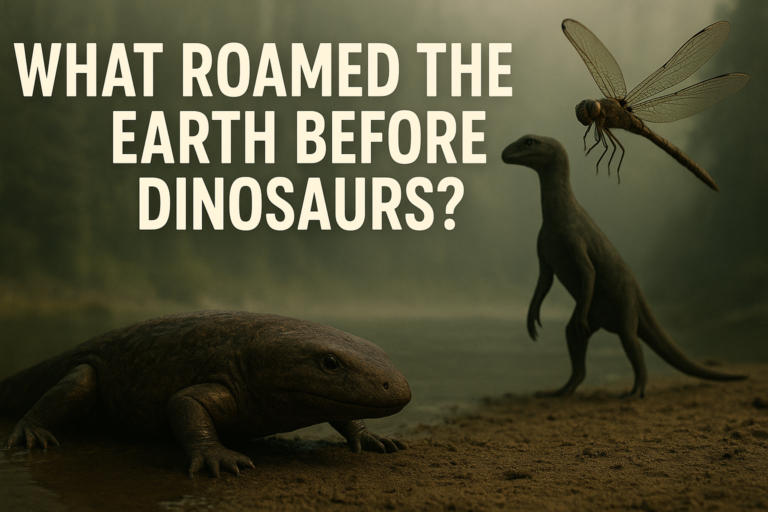Electricity is key to our modern world, powering our homes and industries. It changed how we live. The story of finding out about electricity is long and interesting, filled with centuries of science and new ideas. We’ll explore how electricity was discovered, from ancient times to the big discoveries that changed everything.

Key Takeaways
- Electricity has a rich history dating back to ancient civilizations, where early observations of static electricity laid the foundation for future discoveries.
- Pioneering scientists and philosophers, such as Benjamin Franklin and Michael Faraday, made significant contributions to our understanding of electricity and its properties.
- The invention of the electric generator and the incandescent light bulb revolutionized the practical application of electricity, leading to its widespread adoption in daily life.
- Electricity has become a driving force behind modern technology, powering everything from our smartphones to our transportation systems.
- The future of electricity lies in the development of renewable energy sources, which promise to provide clean, sustainable power for generations to come.
The Early Beginnings of Electrical Discoveries
The study of static electricity and electrical discoveries goes way back to ancient times. Long before modern science, people noticed and tested ancient electricity. These early observations and tests helped us understand this amazing force.
Ancient Civilizations and Static Electricity
The Egyptians, Greeks, and Chinese were among the first to look into static electricity. They saw how rubbing certain materials like amber could make objects stick together. This sparked a deep interest in the mysterious force of electrical discoveries.
Early Explorers and Philosophers’ Contributions
Many thinkers and scholars have greatly helped us understand electrical science. Greek thinkers like Thales of Miletus and Pliny the Elder wrote about their ancient electricity experiments. Later, Arab scientists like Ibn Sina (Avicenna) and Al-Biruni deepened our knowledge of static electricity.
| Pioneer | Contribution |
|---|---|
| Thales of Miletus | Observed that amber could attract lightweight objects when rubbed |
| Pliny the Elder | Documented the phenomenon of static electricity in his writings |
| Ibn Sina (Avicenna) | Studied the properties of static electricity and its potential uses |
| Al-Biruni | Conducted experiments and made observations on ancient electricity |
These early pioneers set the stage for the electrical discoveries that changed science and technology.
Benjamin Franklin’s Kite Experiment
Benjamin Franklin was a true polymath and a key figure in the U.S. He made major contributions to electrical science. His lightning rod experiment showed how lightning and electricity are linked. This discovery led to big leaps in electrical theories and technologies.
In 1752, Franklin flew a kite in a thunderstorm for his famous experiment. He used a metal key on the kite string to collect an electrical charge. This proved that lightning is a form of electricity, a key discovery.
Franklin’s work was a huge scientific leap forward. It showed his creativity and thirst for knowledge. His findings led to the creation of lightning rods, which protect buildings from lightning strikes.
Franklin’s kite experiment had a huge impact. It deepened our understanding of electricity and opened doors for new discoveries. This led to the creation of electrical devices that changed our lives.
“Electricity, rightly used, is a wonderful servant; but if mistreated, it becomes a terrible master.” – Benjamin Franklin
Franklin’s work in electrical science still inspires today’s scientists and innovators. His experiment is a prime example of the power of curiosity and the pursuit of knowledge.
| Experiment | Year | Significance |
|---|---|---|
| Benjamin Franklin’s Kite Experiment | 1752 | Demonstrated the connection between lightning and electricity, leading to the development of lightning rods and advancements in electrical theories and technologies. |
Michael Faraday and Electromagnetism
Michael Faraday, a British scientist, is known as the father of electromagnetism. His work changed the way we use electricity today. He made discoveries that led to many practical uses of electricity.
Faraday’s Groundbreaking Discoveries
Faraday started his work on electrical science with experiments on electromagnetic induction in 1831. He found that moving a magnet near a wire creates electricity. This was a big step forward, leading to the creation of electrical generators and transformers.
Faraday didn’t stop there. He also explored how electricity and magnetism are connected. His work showed that these two forces are closely linked. This knowledge became key to understanding electromagnetism, a vital part of electrical science.
| Discovery | Description |
|---|---|
| Electromagnetic Induction | Faraday discovered that moving a magnet through a coil of wire can generate an electric current, a finding that led to the development of electrical generators and transformers. |
| Relationship between Electricity and Magnetism | Faraday’s experiments and theories established the fundamental principles of electromagnetism, demonstrating the intrinsic link between electricity and magnetism. |
Faraday’s discoveries changed the world, leading to many new technologies. From electric motors to wireless communication, his work has had a lasting impact. He is still an inspiration to scientists today.
“Nothing is too wonderful to be true if it be consistent with the laws of nature.” – Michael Faraday
Electricity: From Theory to Practical Applications
The journey from understanding electricity in theory to using it in real life was a big change. It helped start the Industrial Revolution. Scientists and engineers found ways to use this powerful force in many areas of life.
In the 19th century, electrical technology made big steps forward. This led to the creation of useful electrical devices for factories, transport, and homes. Things like the electric motor and the light bulb changed how people lived and worked.
Adding electricity applications to industries was a key moment. Factories could run their machines with electricity, making them work better and faster. The transport sector also changed, with electric trains and streetcars making moving people and goods easier.
| Electrical Innovations | Impact on Industry |
|---|---|
| Electric Motors | Increased efficiency and productivity in factories |
| Incandescent Light Bulbs | Illuminated homes and workplaces, extending the workday |
| Electric Trains and Streetcars | Revolutionized transportation, connecting people and goods |
As more uses for electricity came up, the world changed a lot. The Industrial Revolution got stronger, with more factories, transport, and even homes using this powerful energy source.
“Electricity is the greatest discovery in scientific history, but its full use and benefits have only begun.”
Using electricity applications in many areas was a big step in history. It helped start the Industrial Revolution and shaped the future of electrical technology.
The Birth of the Electric Generator
The electric generator’s invention was a key moment in electrical engineering history. It was built on Michael Faraday’s groundbreaking work. This device led to the widespread use of electricity and the creation of the modern power grid.
From Faraday’s Principles to Power Generation
Faraday’s work in electromagnetism was a big step forward. He found that moving a magnetic field around a conductor can create electricity. This idea became the base of the electric generator technology.
Engineers and scientists saw the power in Faraday’s ideas. They started working on ways to use this effect in real life.
In the 1830s and 1840s, the first electric generators were made. They used a coil of wire moving in a magnetic field to make electricity. These early versions were simple but showed the huge potential of this technology.
| Key Developments in the Birth of the Electric Generator | Year |
|---|---|
| Michael Faraday’s discovery of electromagnetic induction | 1831 |
| First successful electric generators developed | 1830s-1840s |
| Dynamo-electric principle introduced by Siemens and Wheatstone | 1866 |
| Alternating current (AC) generators become widely adopted | Late 19th century |
The electric generator’s creation was a big step in electrical engineering. It changed how we make and share power. Engineers used electromagnetism to make a steady and efficient electricity source. This led to the modern power grid and made our world more electrified.
Thomas Edison and the Incandescent Light Bulb
Thomas Edison was a famous American inventor. He made big changes in electrical innovations. His work on the incandescent light bulb changed how we use and see light.
Edison started working on a long-lasting, efficient light source in the late 1870s. After many tries, he made a bulb that could light up a room for hours. His success came from finding the right materials and design for the bulb.
Edison’s light bulb changed lighting technology and helped bring electricity into homes and businesses. It made lighting easy and affordable, helping shape our modern world.
| Year | Key Milestone |
|---|---|
| 1879 | Thomas Edison patents the incandescent light bulb after extensive research and experimentation. |
| 1880 | Edison’s first commercial electric lighting system is installed in Lower Manhattan, New York. |
| 1882 | The first central power station, the Pearl Street Station, is opened in New York City, providing electricity to surrounding buildings. |
Thomas Edison’s work on the light bulb did more than just improve lighting. It helped make electrical technologies common, changing our daily lives. Edison’s work and spirit inspire many today.
This famous quote shows Edison’s determination and resilience. His hard work and creativity made him a key figure in electrical technology history.
The Rise of Electricity in Daily Life
Electricity has changed our lives in big ways, making our daily routines easier and more efficient. It has brought us household appliances and many technological advancements. These changes have greatly impacted our world.
Electrical Innovations and Their Impact
Now, we use electricity-powered devices all the time. Things like refrigerators, washing machines, and air conditioners make our homes more comfortable. Smartphones and laptops connect us to information and people easily.
- Refrigeration and food preservation have changed how we handle food, cutting down on waste and improving health.
- New lighting technologies, from incandescent bulbs to LED lights, have made our homes and workplaces brighter and more energy-efficient.
- Electric vehicles and renewable energy sources like solar and wind power are helping us live more sustainably.
Today, electricity is a key part of our lives, powering our homes, offices, and even medical treatments. It has changed many parts of our society.

“Electricity is the soul of the universe, and the foundation of all energy.”
The story of electricity in our lives is one of constant progress and innovation. As we use electricity more, we’re likely to see even more changes that will shape our future.
Electricity: A Driving Force of Modern Technology
Today, electricity is a key player in our world, driving tech progress. It has changed our lives in big ways since the digital revolution started. We see its impact in everything we do every day.
Electricity has led to many tech breakthroughs. It changed how we talk, work, and have fun. Now, we have computers, smartphones, and the internet. These tools let us share info and work together in ways we couldn’t before.
Electricity also affects other areas like transport, health, and energy. Electric cars are making our future greener. In health, new medical devices powered by electricity are helping patients get better faster.
As we move forward, electricity will keep shaping our society. It’s key in the digital age and in finding new energy sources. Electricity’s role in tech progress is clear, making it a vital part of our lives.
| Technological Breakthrough | Contribution of Electricity |
|---|---|
| Computers and the Internet | Enabled the digital revolution, allowing for seamless communication and information exchange |
| Electric Vehicles | Paved the way for sustainable transportation, reducing reliance on fossil fuels |
| Medical Equipment | Revolutionized healthcare diagnostics and treatments, improving patient outcomes |
“Electricity is the greatest discovery in the history of mankind.” – Nikola Tesla
As we use electricity more and innovate, the future looks bright. Electricity’s story from the start to now shows how human creativity and the drive for progress can change the world.
The Future of Electricity and Renewable Energy Sources
The world is facing a big challenge with climate change. We need sustainable and renewable energy more than ever. The way we make electricity is changing, with renewable energy leading the way towards a greener future.
Renewable energy like solar, wind, and hydroelectric power is becoming more popular. These sources are clean and offer a way to make electricity without using fossil fuels. The move to renewable energy is happening fast because these technologies are getting cheaper and more efficient.
The electric vehicles (EVs) industry is also changing a lot. More people want EVs because they’re better for the planet. This means we need a strong and sustainable electricity grid to support these cars.
The future of electricity looks bright with renewable energy leading the way. As technology gets better and more people learn about it, we’ll keep moving towards cleaner energy. This will help us create a greener and better future.

Looking ahead, the future of electricity and renewable energy has both ups and downs. Changing to a sustainable electricity grid will take a lot of work and money. But, the benefits like less pollution, cleaner air, and more energy security are huge. As we move forward, progress in renewable energy and electric vehicles will change how we use electricity. This will lead to a more sustainable and strong energy future.
Conclusion: Electricity, A Revolutionary Breakthrough
The story of electricity is amazing, from its first steps to its big impact on today’s world. It shows how human creativity and tech progress can change everything. We’ve seen how key discoveries and new ideas led to the electrical revolution.
Electricity powers the tech advances that change our everyday lives. It went from the light bulb to making homes and industries electric. This energy source has changed how we live, work, and connect with others. The electrical revolution brought us the modern comforts and tech wonders we love today.
Looking ahead, electricity and green energy will keep making our future better. New ideas in clean energy and smart grids will shape tomorrow’s world. They’ll keep the impact of electricity’s big breakthrough going strong for many years.
FAQ
What is the history of the invention of electricity?
The story of electricity’s invention is exciting, starting with ancient observations. It has changed our world a lot. Today, it keeps pushing technology forward.
How did ancient civilizations and early explorers contribute to the discovery of electricity?
Ancient people like the Egyptians and Greeks noticed and tested static electricity. Explorers and thinkers before us also helped us understand electricity.
What was the significance of Benjamin Franklin’s kite experiment?
Benjamin Franklin’s kite experiment showed a link between lightning and electricity. This led to more progress in electrical science and tech.
How did Michael Faraday’s work on electromagnetism advance the field of electrical science?
Michael Faraday is known as the father of electromagnetism. His discoveries, like electromagnetic induction, helped us use electricity in real life.
How did the transition from theoretical understanding to practical applications of electricity occur?
The move from theory to using electricity in real life happened during the Industrial Revolution. New tech made it possible to use electricity in many areas of life and work.
What was the significance of the development of the electric generator?
The electric generator was key to using electricity widely. It was based on Faraday’s work. The first generators started the modern power grid.
How has electricity become integrated into daily life?
Electricity is now a big part of our daily lives. It powers household items and has changed how we work and live. It has greatly impacted our society.
How has electricity become a driving force behind modern technology?
Electricity fuels modern tech, from the digital age to new industries. It keeps evolving, shaping our world.
What is the future of electricity and renewable energy sources?
The future looks bright with renewable energy sources becoming more important. They could change how we make and use electricity. We’re moving towards a greener electrical system.




